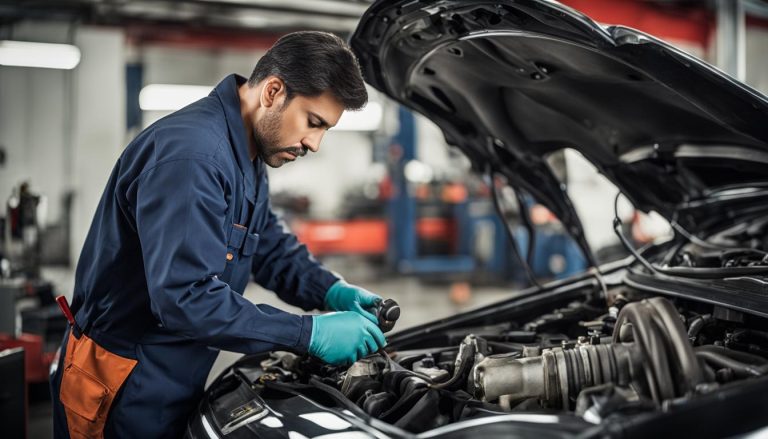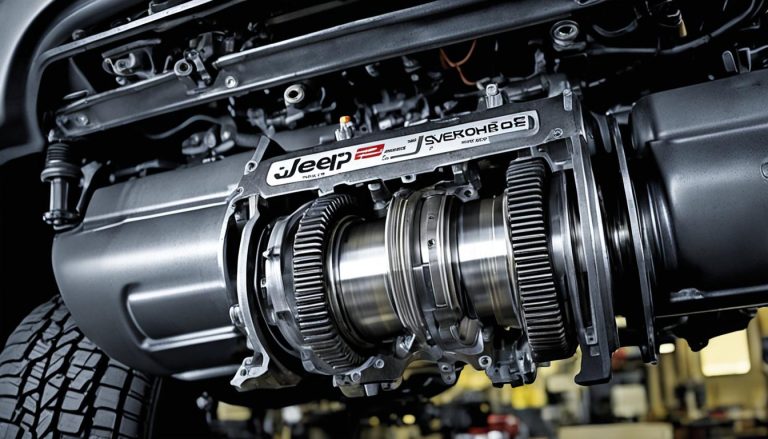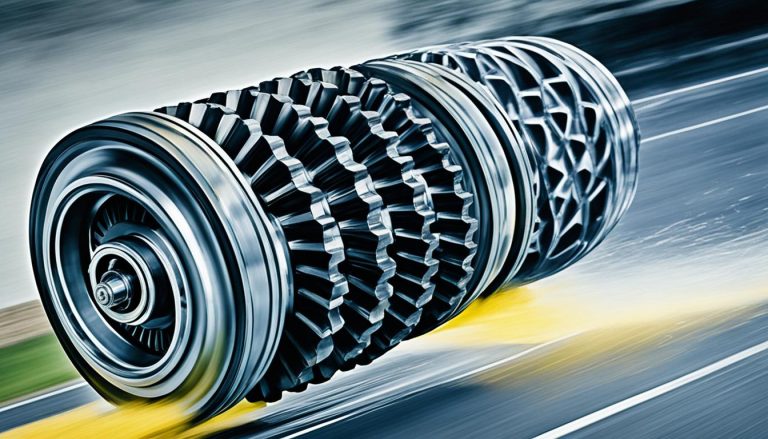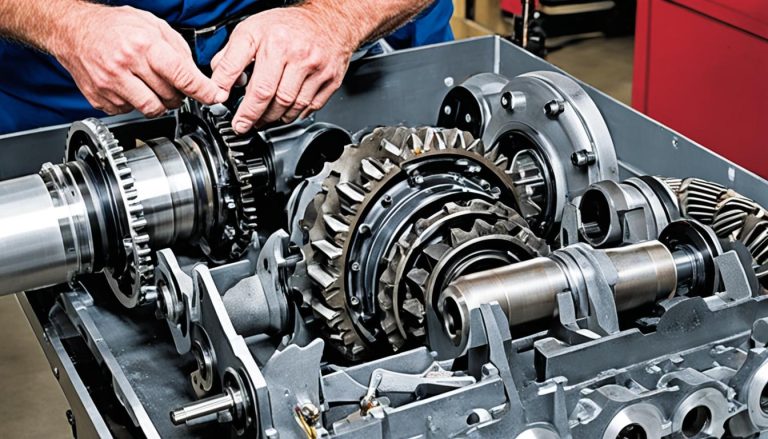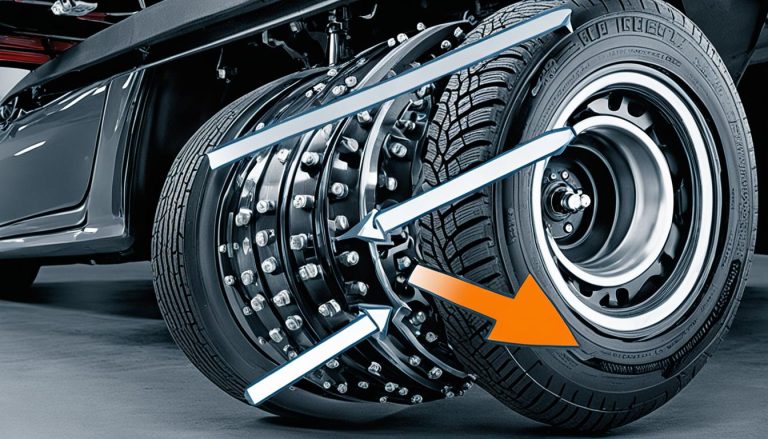Maximize Control: Your Differential Electronic Limited Slip Rear
As you chart your journey towards automotive excellence, understanding the heart of your vehicle’s agility—the differential electronic limited slip rear—becomes essential. This marvel of differential technology seamlessly blends stability with dynamic handling, allowing you to carve corners with precision or power down the straights with confidence.
In the realm of performance driving, the power of an electronic limited slip differential, also known as an e-LSD, is unmatched. It’s the cornerstone of a well-tuned rear differential system, where power isn’t just delivered, but directed with a keen sense of purpose. The right adjustments to your limited slip rear can transform your driving experience from mundane to exhilarating.
Whether you’re an enthusiast looking to finesse your weekend track warrior or simply someone who appreciates the nuanced performance that comes with advanced differential systems, optimizing your electronic differential is a game-changer. Let’s dive into how your vehicle’s differential can keep you firmly planted on the asphalt while delivering the thrill that comes from masterful control.
Key Takeaways
- Learn the mechanics behind your sophisticated electronic limited slip differential (e-LSD).
- Discover how differential settings alter handling and traction in various driving scenarios.
- Understanding the role of the e-LSD in achieving enhanced vehicle stability and control.
- Explore the benefits of integrating the e-LSD into your rear axle system.
- Glean insights on optimizing your vehicle’s differential performance for different driving conditions.
- Appreciate how the e-LSD elevates both steering precision and traction management.
Understanding the Mechanics Behind Your Electronic Limited Slip Differential
When it comes to maximizing the performance of your vehicle, the electronic differential plays a pivotal role. Known for enhancing differential slip control, the electronic limited slip differential (e-LSD) serves as the backbone for differential performance, especially in high-stakes driving scenarios. Let’s delve into the technical aspects and advantages that this integral piece of engineering offers to your vehicle’s dynamics.
Defining Differential Electronic Limited Slip Rear Technology
An electronic limited slip differential, commonly found in the rear axle differential, is designed to distribute power between wheels with a precision that traditional systems cannot match. This advanced technology detects and minimizes traction loss, ensuring that torque is delivered to the wheel with the most grip. By doing so, the e-LSD provides a significant advantage in stability and handling, particularly in challenging driving conditions.
The Role of LSD in Vehicle Traction and Stability
Your vehicle’s traction and stability hinge significantly on the functionality of its differential. An electronic differential contributes to this by consistently monitoring road conditions and wheel performance, adjusting the degree of wheel slip accordingly. Through differential slip control, the system delivers just the right amount of power to each wheel, enhancing your car’s handling and cornering capabilities while maintaining optimal safety.
Comparing Electronic vs. Mechanical Limited Slip Differentials
The e-LSD and its mechanical counterpart both aim to improve a vehicle’s handling, but their approaches are markedly different. The e-LSD leverages modern computational power to make real-time adjustments for each individual wheel, something a mechanical LSD would find challenging. The result is a driving experience that is both adaptive and intuitive, providing you with confidence behind the wheel, whether you’re navigating tight turns or facing varied road surfaces.
Improving Your Driving Experience with Differential Slip Control
The journey to mastering the road lies within the heart of your vehicle’s differential technology. The differential electronic limited slip rear (LSD) is more than a complex piece of machinery—it’s your partner in enhancing every twist and turn on the asphalt. By understanding and adjusting the differential settings, you refine your vehicle’s response, resulting in an exhilarating and tailored driving experience that caters to your precise preferences and driving conditions.
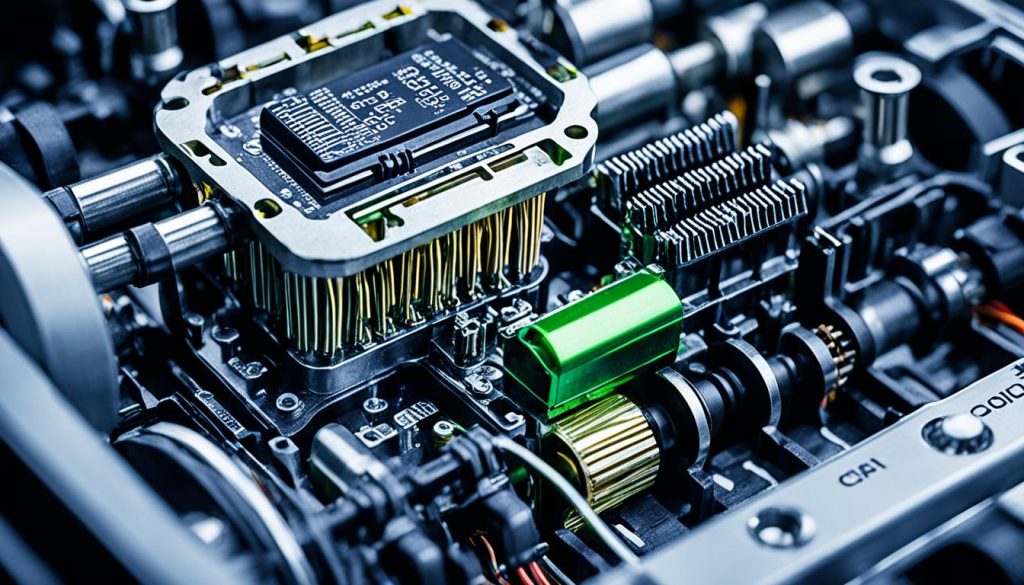
Optimizing LSD Settings for Acceleration and Deceleration
When you push your car to its limits, the fine balance between control and thrill comes into play. Properly calibrating your vehicle’s differential slip control allows you to optimize for acceleration, yielding sharper, more aggressive turns. Yet, this tightrope walk of performance beckons the risk of oversteer, a reminder that power must be wielded with respect and precision. Alterations in deceleration settings, on the other hand, offer smoother entries into curves under braking but carry their own set of challenges, such as an increased likelihood of instability.
The Impact of Differential Settings on Driving Maneuvers
Each adjustment to your LSD settings can be perceived in the nuanced ballet of driving maneuvers. Whether you’re negotiating hairpin bends or commanding high-speed avenues, the influence of differential performance is undeniable. It affects your turn radius, the responsiveness of your vehicle under varying accelerative forces, and the overall harmony between driver, machine, and road. To lay the groundwork for this perfection, it’s instrumental to first dial in your suspension setup, ensuring that the foundation of your ride is solid before fine-tuning the LSD to enhance your driving narrative.
Remember, like any skilled artisan, the finest results arise from patience, care, and attention to detail. Your journey with differential technology is one of continuous learning and adaptation, each mile traveled a step towards automotive enlightenment.
Integrating Electronic Limited Slip Differential in Rear Axle Systems
When you take charge of a car equipped with an electronic limited slip differential (e-LSD), you’re experiencing the pinnacle of rear differential engineering. This differential system is a marvel that addresses the power imbalance between wheels, offering unmatched control and stability. Particularly in performance vehicles, like the lauded Corvette, the e-LSD has become a crucial component for enhancing handling characteristics.
Imagine driving down an invigorating stretch of road; your e-LSD seamlessly engages various modes to match your every move. These sophisticated settings are programmed to automatically spring into action, determined by the conditions you’re encountering – all without needing to lift a finger. It’s there, silently calibrating the optimal amount of pressure on the differential clutches to provide stellar traction and precise steering. It’s advancements like these that showcase how integral the rear axle differential is to the overall driving experience.
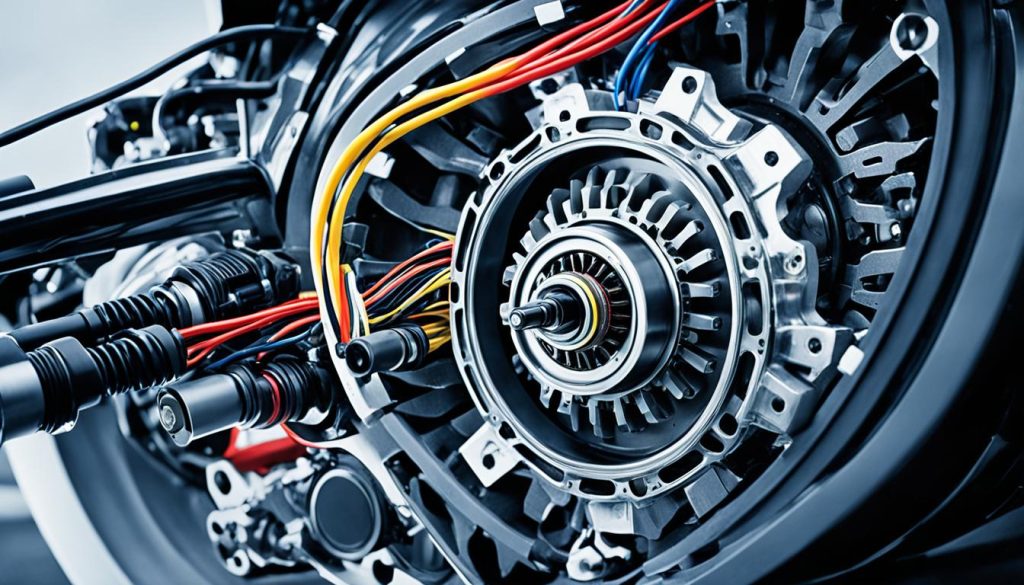
Here’s a deeper look at how the electronic limited slip differential operates:
- Clutch Coupling Percentage: By adjusting the locking force between the rear wheels, e-LSD mitigates wheel slip during acceleration. This feature provides greater control and power distribution, tailored to the grip availability on either side of your car.
- Rear-Wheel Slip Percentage: Monitors and adjusts real-time wheel slip to prevent loss of traction, ensuring that both of your vehicle’s rear wheels are moving at optimal speeds relative to each other and the road surface, purposing each tire’s contact with finesse.
The table below illustrates different driving scenarios and how the e-LSD’s real-time adjustments enhance your driving experience:
| Driving Scenario | e-LSD Response | Benefit to Driver |
|---|---|---|
| Sharp Cornering | Increase in clutch coupling pressure | Improved traction for enhanced steering precision |
| Straight Line Acceleration | Even distribution of torque | Minimized wheel slip for faster acceleration |
| Adverse Weather Conditions | Dynamic pressure adjustments | Consistent traction and control despite slippery surfaces |
As you can see, the electronic limited slip differential is more than a component; it’s your unseen co-pilot, dedicated to enhancing your vehicle’s adherence to the road, synchronizing every motion to produce a harmonious and responsive drive.
Maximizing Differential Performance in Different Driving Conditions
Whether you’re the type to get your adrenaline pumping on a road racing track or you prefer the straight-line speed of drag racing, the versatility of the differential electronic limited slip rear (e-LSD) is the cornerstone of customized vehicle control. The fine-tuning capabilities of e-LSDs cater performance to the specific demands of diverse driving environments, ensuring that you have the grip and stability when you need it the most.
Adapting e-LSD for Road Racing versus Drag Racing Contexts
In the realm of road racing, the differential slip control provided by e-LSDs allows for nuanced power distribution that optimizes turn-in speed without sacrificing tire grip. Drag racing, on the other hand, demands a different approach—less about finesse and more about raw power delivery. Here’s how e-LSD adjustment matters in both scenarios:
- Road Racing: Focused on maintaining power on the outside wheel to counteract the natural pull of the car towards the inside of a turn, promoting a faster response and precision cornering.
- Drag Racing: Prioritizes immediate power to both wheels simultaneously, for maximum traction during high-stakes launches off the starting line.
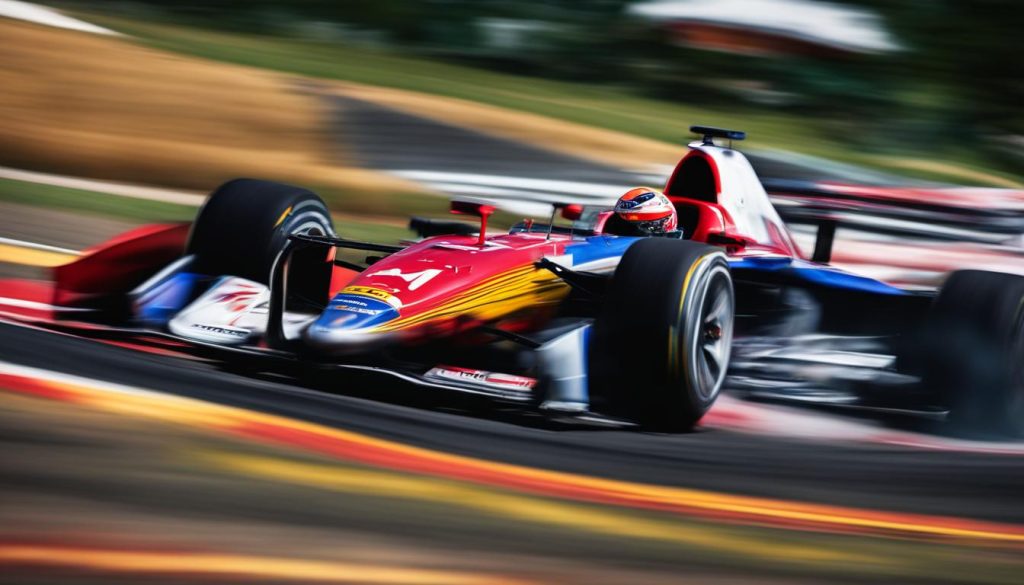
The Importance of Dynamic Lock Ratios in Vehicle Handling
The dynamic lock ratio is a pivotal aspect of differential performance. Changing the lock ratio adjusts how the car handles, particularly during turns. With e-LSD, these ratios are continuously modulated to match driving conditions, thus preventing loss of control and enabling you to maintain your racing line with confidence.
How e-LSD Adjustments Affect Turn-in Speed and Stability
By precisely calibrating the e-LSD to your driving situation, such as aggressive cornering or sudden evasive maneuvers, the impact on turn-in speed and vehicle stability can be immense. The e-LSD is designed to adapt its performance in real-time, giving you the best possible level of control—whether you’re navigating a complex circuit or accelerating down a quarter-mile strip. The key lies in adjustment adaptability, allowing for peak differential electronic limited slip rear functionality in every context.
Differential Electronic Limited Slip Rear: Enhancing Steering and Traction Control
In the realm of modern automotive advancements, the incorporation of a differential electronic limited slip rear has been a game-changer, particularly in terms of augmenting steering precision and traction management. As you switch between driving modes to fit the demands of different road situations, the electronic limited slip differential (e-LSD) assures that your vehicle responds with appropriate agility and stability. Whether you’re focused on fuel efficiency in ECO mode or craving the adrenalized performance of SPORT mode, each selection calibrates the system to provide a tailored driving experience.
A remarkable aspect of this innovative differential technology is the integration of warnings and dynamic control systems, designed protectively to keep you from unintentional damage—like a guardian angel monitoring for mismatched tires or excessive heat buildup. This smart functionality of your differential system stands as a testament to the meticulous engineering that ensures a symbiotic relationship between driver intention and vehicle performance. With every curve of the road and every slick patch of rain-soaked asphalt, your limited slip rear works silently yet effectively to deliver optimal control and confidence behind the wheel.
The cumulative wisdom encoded in the differential electronic limited slip rear gives you a remarkably intuitive drive. It’s not just about raw power; it’s the intelligence of distributing that power where and when it’s needed most. And because these systems are continually refined, you’re at the helm of a vehicle that embodies the peak of differential technology—ready to take on high-speed turns and slippery straightaways with equal poise. This is the crux of driving evolution, where control, performance, and safety converge to enhance every journey you undertake.
FAQ
What is a differential electronic limited slip rear?
A differential electronic limited slip rear, or e-LSD, is a type of rear differential that uses an electronic control system to variably distribute torque between the wheels on the same axle. This helps to maximize traction and control during various driving conditions, like acceleration, cornering, and in low-grip environments.
How does an electronic limited slip differential enhance vehicle performance?
An electronic limited slip differential (e-LSD) improves vehicle performance by actively managing the power sent to each wheel. This avoids wheel spin in low traction situations and allows for sharper turn-in during cornering. It helps in maintaining better control and increasing acceleration out of corners, resulting in faster lap times and a more stable driving experience.
What’s the difference between electronic and mechanical limited slip differentials?
Electronic limited slip differentials use complex algorithms and fast-acting actuators to adjust the lock-up of the differential in real-time, offering instant response and adaptability to road conditions. Mechanical limited slip differentials, on the other hand, rely on mechanical components such as clutches or gears and reactive forces to distribute torque, which cannot change as quickly as their electronic counterparts.
How do I optimize LSD settings for acceleration and deceleration?
Optimizing LSD settings requires a balance. For acceleration, settings should ensure that torque is effectively distributed to prevent wheel spin and maintain stability. For deceleration, settings should facilitate controlled vehicle response under braking and turning. This often involves iterative tuning and can be highly dependent on the suspension setup and the driver’s preferences.
What is the impact of differential settings on driving maneuvers?
Differential settings can greatly affect a vehicle’s handling characteristics. Changes in these settings can alter the turning radius, response to acceleration and braking forces, and the tendency for oversteer or understeer. Drivers may observe a more immediate response in cornering or a smoother transition when navigating through curves based on these adjustments.
In what ways are e-LSD systems integrated within rear axle systems?
e-LSD systems are integrated within rear axle systems by constantly managing the clutch pressure applied to the differential. It works in conjunction with the vehicle’s stability control systems, and is designed for seamless operation that adjusts to driving style and conditions without the need for manual driver input.
How does e-LSD technology adapt to road racing versus drag racing?
e-LSD technology is fine-tuned differently for road racing compared to drag racing, to match the distinct demands of each. For road racing, the technology focuses on maintaining power on the outside wheel to enable faster turn-in speeds, while for drag racing, the system usually aims for a more aggressive lock-up to maintain straight-line traction during launches.
Why are dynamic lock ratios important for vehicle handling?
Dynamic lock ratios are crucial as they dictate how power is distributed between the wheels in real time. This affects the car’s handling, responsiveness, and grip. Properly calibrated lock ratios can reduce understeer, improve turn-in speed, and enhance stability through corners, leading to a more predictable and engaging driving experience.
Can e-LSD adjustments influence turn-in speed and overall stability?
Yes, e-LSD adjustments can significantly influence turn-in speed and overall vehicle stability. By finely tuning the amount and speed at which torque is transferred between the wheels, e-LSD can improve the agility and responsiveness of a vehicle during corner entry, mid-corner, and exit, contributing to faster and more stable cornering.
How does the differential electronic limited slip rear enhance steering and traction control?
The differential electronic limited slip rear enhances steering by ensuring that the optimal amount of torque is delivered to each wheel, thus reducing understeer and oversteer tendencies. Traction control is improved as it prevents wheel spin in low-traction conditions by intelligently distributing power to the wheel with the most grip, providing a more secure and controlled driving experience.

